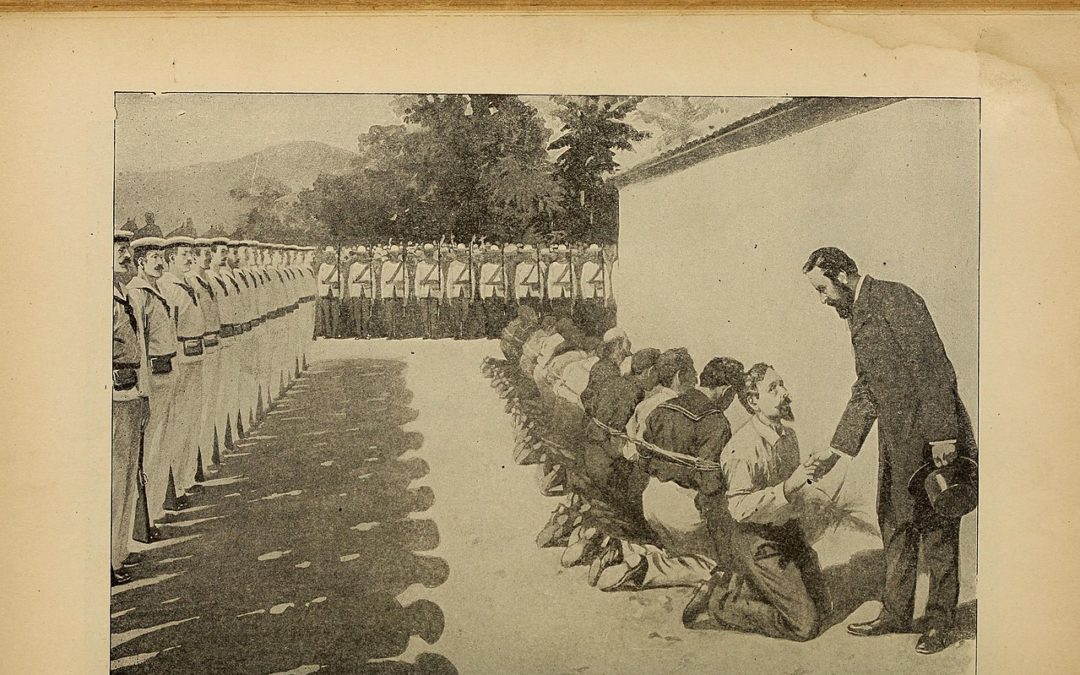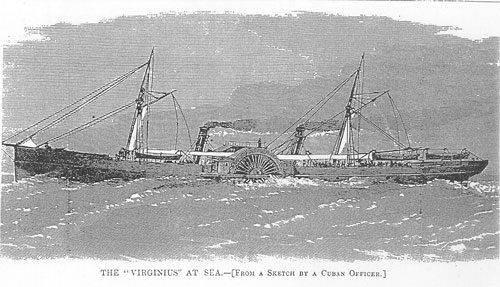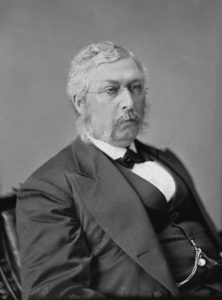Following the Civil War, the United States Navy had languished as funding was diverted to efforts aimed at rebuilding a wounded nation. Only a small handful of ships were kept to serve as a coastal defense force. Elsewhere, nations had observed the power of Ironclads during the Civil War and hastily began building fleets of iron plated warships. Somewhat Ironically, the United States had largely abandoned the development of the ironclad following the War. While they relied on leftovers from the Civil War, other nations began introducing more advanced ironclad models. This caused the United States to fall behind in quality as well as quantity. The United States needed a reminder that the Navy was an important component in strengthening the country. That reminder would come in the 1870s when the country found itself at odds with Spain during the Virginius affair.
The Virginius Affair
In 1868, war broke out in Cuba as landowners rebelled against Spain. Though the United States maintained stable relations with Spain, many in the country rose in support of the Cuban rebels. One such individual was John Patterson, an agent acting on behalf of the rebels. He desired to bring ammunition and supplies to the rebels. To accomplish this, he purchased a Confederate blockade runner named Virgin in 1870. Renaming the ship Virginius, she was used to transport supplies and men to Cuba in support of the rebellion. For three years, Virginius successfully delivered supplies to Cuba. Spain was aware of the ship and made many attempts to stop the ship.
They would finally succeed in 1873 when Spanish authorities received a report that Virginius was heading towards Cuba with another shipment of supplies. A gunboat was dispatched to intercept the ship as she approached Cuba. On October 30, 1873, the Spanish gunboat finally located Virginius and gave chase. Virginius, in poor condition and incapable of outrunning the Spanish ship, surrendered. Spain brought the ship to Cuba and put the entire crew on trial as pirates. The entire crew, comprised of American and British citizens, was found guilty and sentenced to death. The American government attempted to aid its citizens, but Spain ignored them and began executing the crew. 53 people were executed with several then being decapitated while the bodies were trampled under horses.
Fortunately, the British Government had become aware of what was happening and dispatched a warship to Cuba to investigate. The warship, HMS Niobe, arrived at the city of Santiago where the executions were taking place. The commander of the ship, Sir Lambton Loraine, immediately ordered the Spanish to cease the executions. Loraine even went so far as to threaten to bombard the city if his demands were not met. Spain relented and halted the executions, sparing the surviving crew of the Virginius.
The United States public, upon learning of the executions, immediately began calling for war against Spain. Luckily, the United States Government was able to diplomatically resolve the crisis. They secured reparations for the victims as well as the return of Virginius and her crew. This victory in diplomacy served to quell public anger and prevent the out brake of further hostility.
The Affect on the United States Navy
While the American public was demanding war, the United States Navy was no doubt dreading the prospect. At the time, a Spanish ironclad was in New York Harbor awaiting repairs. A more modern ironclad, the United States Navy had no warship in its inventory capable of engaging it. This led to the sickening realization that if war had broken out, the Spanish warship could have begun shelling New York City with impunity, the US Navy powerless to stop it. Had Spain sent its fleet to battle, the US Navy would be fighting an enemy with a larger number of more advanced ships. The US Navy was surpassed by Spain both in quality and quantity. To make matters worse, the few warships the United States had were incapable of fighting abro
Secretary of War George Robeson. During the Virginius affair, he began pushing for the United States Navy to begin strengthening itself.
ad. The available ironclads were originally designed for operation in coastal areas and on rivers. They could hardly make the 100 mile journey to Cuba much less sail to Spain from across the Atlantic.
While diplomacy was hailed as the driving force that settled the Virginius Affair, the US Government no doubt noted the effect that gunboat diplomacy had in preventing further executions. Spain had continued executing captives despite demands by the United States. The executions only stopped when a British warship arrived and issued a threat that Spanish authorities could not ignore. Military power had succeeded where diplomacy had not. The United States must have realized the weight of power a blue water fleet would provide on the negotiating table.
Luckily, the lessons of the Virginius Affair had not gone unnoticed. George M. Robeson, then serving as the Secretary of War, determined that the United States Navy must begin rebuilding itself into a more capable force. He immediately began calling for a new fleet of warships capable of matching those found in foreign navies. However, he faced stiff opposition from the United States Congress. Through clever tricks and outright deception, Robeson would eventually get his fleet. His efforts laid the groundwork that saw the United States Navy rise from a poorly equipped coastal defense force into a large, modern blue water navy able to project United States power abroad.
To be continued in Part II : Rise of the Modern United States Navy
Further Links
Further Links
Want to follow Navy General Board on Social Media? Check us out on the platforms below!
More Great Articles
The biggest Cruisers of World War II.
Life aboard a US Navy Battleship During the Korean War.
Why were so many Warships Never Built?
The Iowa Class Battleship, A Departure from Traditional Design





Recent Comments